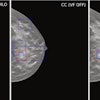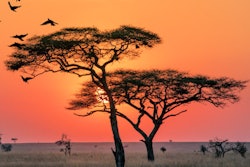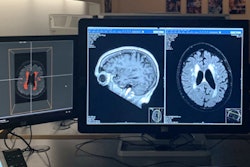
A dermatology algorithm powered by artificial intelligence (AI) that can identify a range of skin conditions doesn't work effectively on black skin, according to researchers in Uganda and Sweden. The study highlights the potential risks of AI-based healthcare and the need to ensure diversity in datasets used to train algorithms.
Skin Image Search is an AI app that helps people identify skin conditions. The user uploads a photograph of the problem area and the app suggests the three most likely skin diseases. The latest version of the AI algorithm, released in June 2019, has an accuracy of about 80% for the top three suggestions, while its top suggestion is around 45% accurate, according to First Derm, the company that developed the platform. The company also runs a telemedicine service, where uploaded images are assessed by a qualified dermatologist.
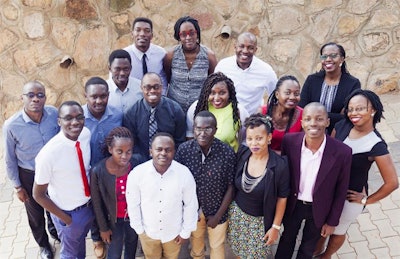 The research team at the Medical Concierge Group in Uganda. All images courtesy of Louis Kamulegeya.
The research team at the Medical Concierge Group in Uganda. All images courtesy of Louis Kamulegeya.The convolutional neural network that powers the AI-based app was trained using more than 300,000 photographs of skin diseases collected by this service, ranging from inflammatory conditions, such as acne and psoriasis, to skin cancers (Kamulegeya et al, bioRxiv.org, October 31, 2019).
The founder and CEO of First Derm, Dr. Alexander Börve, told Physics World that he reached out to his co-authors on the paper for their help to conduct the research as he knew that images of black skin only make up about 5% to 10% of the company's database. According to Börve, the majority of images in the database (70%) are from the U.S., 15% are from the U.K., and 5% are from Sweden, with the rest coming from all over the world.
In Uganda, researchers at the Medical Concierge Group tested the app on 123 photographs of skin diseases collected by a local telemedicine company. All images were from adults with Fitzpatrick skin type 6 (dark brown to black); 62% of the adults were female and 38% were male.
The team used an older version of the app, launched in April 2018, that suggests five -- rather than three -- possible skin conditions, with an accuracy of 70%. On the Uganda data, however, the AI was only able to place the correct skin condition in its top five suggestions for 17% of the images. It failed to return any correct suggestions for 102 of the 123 photographs.
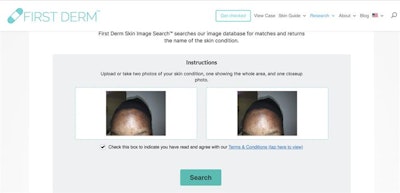
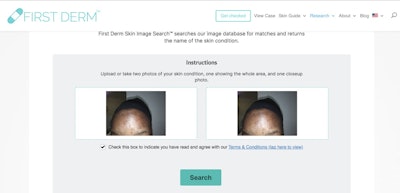
Example of the First Derm Skin Image Search tool in use.
There was also a marked difference in performance with different skin diseases. The app worked well for dermatitis, identifying it as the most likely condition -- giving it the top spot in its suggestions -- with an accuracy of 80%. But while fungal conditions were the most common images, the software failed to identify any of them, achieving an accuracy of 0% for its top five suggestions. The study authors also noted that the app performed slightly better on women than men.
Börve noted that the research will serve as a benchmark for the company, so that it can make sure that it improves with future updates. Going forward, he said, the company will be working to increase the diversity of images that the AI is trained on. "Basically, when we train these neural networks, we need at least 500 images per skin disease and when it comes to black skin, we also need 500 images of that skin disease and that skin type," he explained.
Disease presentation is also an issue, Börve said. In Africa, due to issues with healthcare access, patients are often first seen by a doctor when their problem is at a more advanced stage than in Europe and the U.S. This means that skin diseases may show a different, more advanced presentation than the AI has been trained on.
He thinks that this could be part of the problem with fungal diseases. As fungal conditions progress, they can affect hair growth and cause the skin to become white, and the AI struggles with this, misidentifying conditions as hair loss or psoriasis.
"This is the problem with artificial intelligence; with the development of these systems, you need correct data and you need a lot of data representing the different diseases," Börve said.
Michael Allen is a science writer based in the U.K.
© IOP Publishing Limited. Republished with permission from Physics World, a website that helps scientists working in academic and industrial research stay up to date with the latest breakthroughs in physics and interdisciplinary science.
